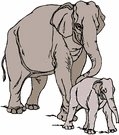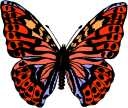
Worksheets and No Prep Teaching Resources
Reading Comprehension Worksheets
Animal Themes
Insects
Invertebrates

Animal Themes
 Worksheets and No Prep Teaching Resources Reading Comprehension Worksheets Animal Themes Insects Invertebrates |
 Animal Themes |
| edHelper's suggested reading level: | grades 6 to 8 | |
| Flesch-Kincaid grade level: | 7.68 |
| Mosquitoes |

|
 1 On a list of the world's most hated insects, mosquitoes usually have a high rank. We dislike them because bites from mosquitoes can cause skin irritation and swelling. The itching, burning feeling from mosquito bites can be so unpleasant that no medication seems to relieve it. To make matters worse, mosquitoes are carriers of dreadful -- if not deadly -- diseases such as malaria, dengue, yellow fever, encephalitis, West Nile virus, and filariasis. It is no wonder that we use any means we can to try to keep their population under control! To do that, we must first understand their lifecycle.
1 On a list of the world's most hated insects, mosquitoes usually have a high rank. We dislike them because bites from mosquitoes can cause skin irritation and swelling. The itching, burning feeling from mosquito bites can be so unpleasant that no medication seems to relieve it. To make matters worse, mosquitoes are carriers of dreadful -- if not deadly -- diseases such as malaria, dengue, yellow fever, encephalitis, West Nile virus, and filariasis. It is no wonder that we use any means we can to try to keep their population under control! To do that, we must first understand their lifecycle. |
Create Weekly Reading Books
Prepare for an entire week at once! |
| Leave your feedback on Mosquitoes (use this link if you found an error in the story) |
 |
Animal Themes
|
 |
Insects
|
 |
Invertebrates
|
 |
Fresh Water
|
 |
Rain Forest
|
|
|